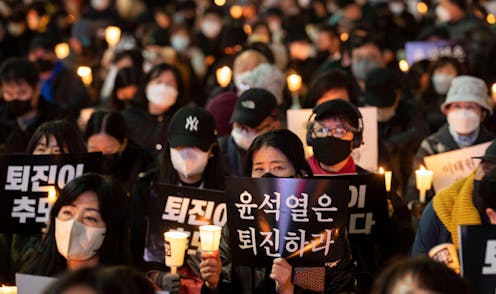
The tragedy in South Korea on Halloween, in which at least 154 people were crushed to death in an alleyway, has a grim historic precedent nearly 80 years before, in wartime London.
In the 1943 Bethnal Green disaster, 173 people lost their lives on the steps down to the entrance to Bethnal Green underground station. The victims, mostly women and children, were sheltering from an air raid. But the witness accounts given in an inquiry after the disaster and interviews with survivors are astonishingly similar to reports of what happened in South Korea.
Local people in Seoul are questioning why there was a lack of police presence to martial the wildly popular Halloween celebrations on the night. Witnesses have described people falling over like dominoes. Some press accounts have speculated the crush might have been caused by a stampede to see a celebrity, pointing the finger at the victims, much in the way the Bethnal Green victims were blamed by authorities.
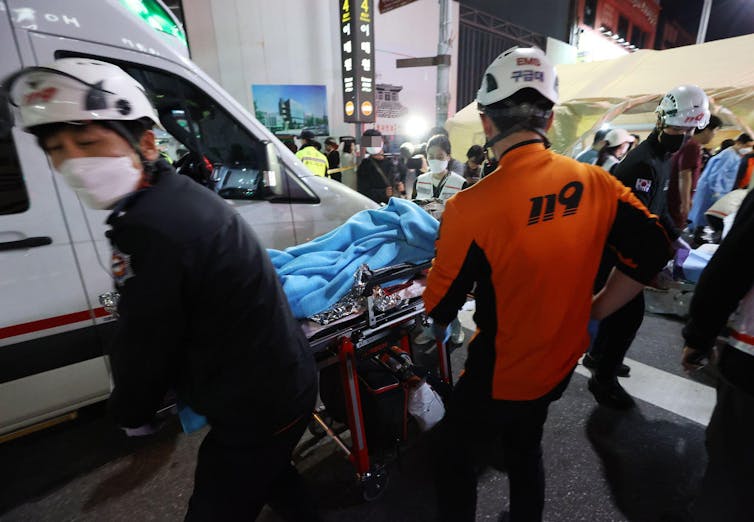
In Bethnal Green, police used to control the flow of people through the single entrance to the air-raid shelter. But on March 3 1943, no-one was there. The stairs were badly lit, had no central handrail and the steps were unfinished.
A women with a child stumbled, fell over, and in a terrible ripple effect people fell into each other and couldn’t get up. The force compressed people’s lungs, leading to an astonishing death toll. As in Seoul, it took more than an hour to extract victims and survivors.
Victim blaming
The Bethnal Green disaster inquiry report investigated the circumstances in detail. But it absolved the authorities responsible for monitoring the shelter and instead blamed the victims for a stampede or “loss of self-control”.
The findings of the inquiry were kept secret until after the war and the witness statements were only made public recently. In 2022, the records were turned into digital versions for the Stampedes Project at the University of Sussex.
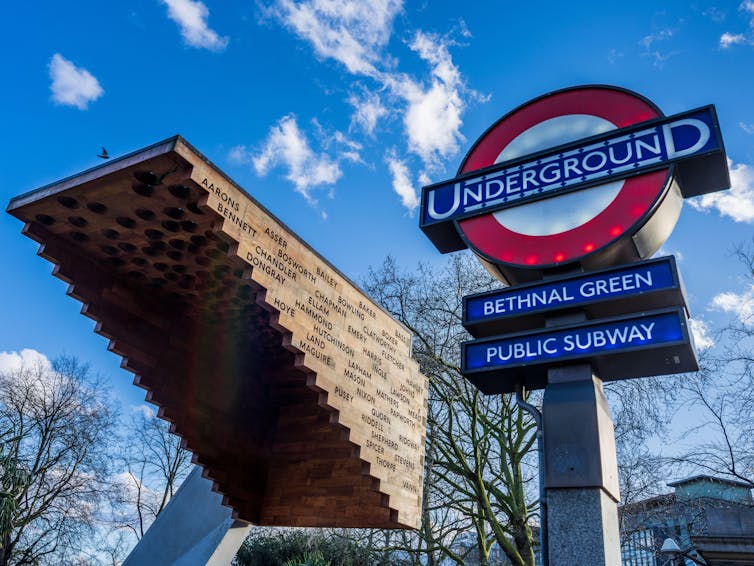
A detailed examination of the witness statements by psychologist Dermot Barr revealed there was almost no evidence for the stampede theory. Indeed, witnesses told the inquiry people behaved rationally and considerately and simply tried to stay together with their families.
Listen to history
This is reminiscent of the Hillsborough disaster in Sheffield in 1989, in which 96 people were crushed to death in overcrowded football stands. The Sun newspaper and senior police officers said drunk football supporters were responsible for the crush.
The Taylor inquiry into what happened in Liverpool revealed the main causes of death were the failure of police to control the crowd and the poor quality of crush barriers in the ground itself. Once again, the victims were blamed for “unruly behaviour” rather than the authorities responsible for crowd control.
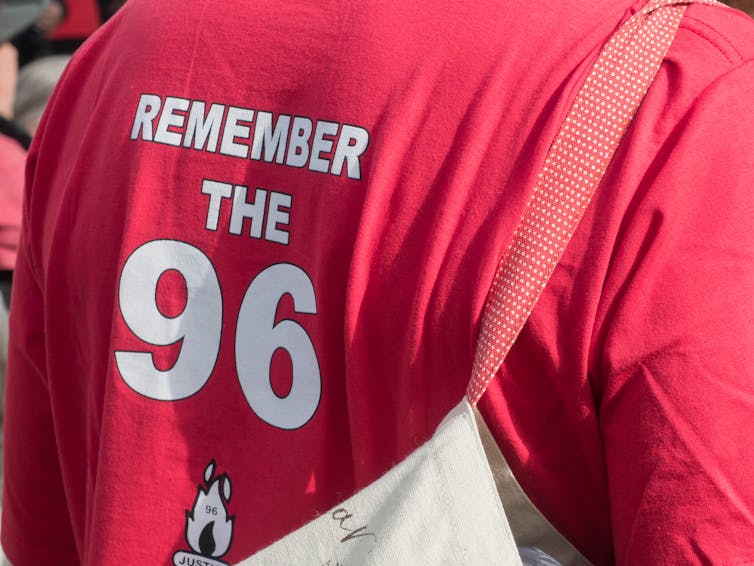
The Stampedes Project is also examining a more recent example from London, the Oxford Street false alarm on November 24 2017 in which nine people were injured following what press reports described as a “mass panic” as people fled from a fight in an underground station. Many people mistakenly thought the brawl was a terrorist attack.
This is perhaps no surprise given there had been several genuine terrorist attacks in London that year. But again, generalisations about crowd behaviour didn’t hold up when the event was studied in detail. For example, video footage actually showed many people walked away from the tube station rather than ran.
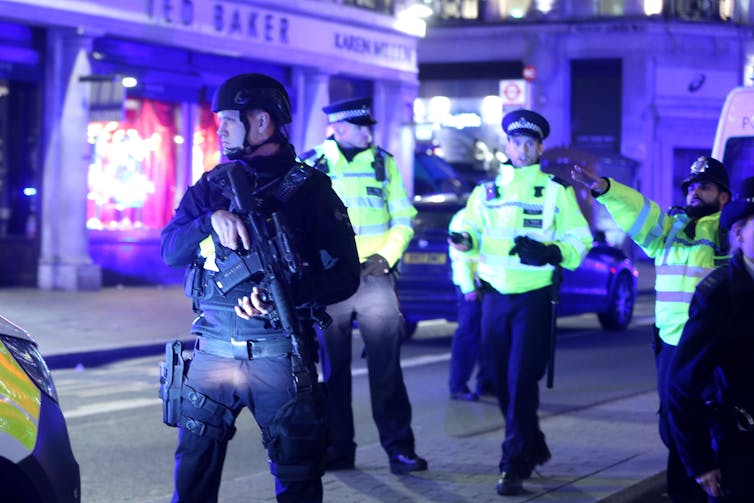
The Bethnal Green inquiry let the authorities off the hook. But it explained the wartime context. There was a shortage of police, for example, because so many had been conscripted. So the entrance had been unstaffed since 1941.
The disaster led to widespread adoption of a number of safety features London commuters will be familiar with today. Well lit passageways, entrances monitored by staff and concertina gates that can be closed in busy periods to prevent over-crowding. Plus central and side handrails on stairs, and internal communication systems so staff above and below ground can communicate easily with each other.
The Taylor report led to a transformation in stadium design, including removal of fencing in football stands. Many English stadiums today have only seats and no standing room.
It is right that historians avoid projecting similar past incidents onto the present. But in some cases, like crowd crush disaster, much can and should be learned.
In Seoul, investigators would do well to consider the adequacy of specific streets and their safety features for crowded conditions. Above all else, they should think about whether the authorities could have reasonably foreseen and acted to prevent the overcrowding. Reporters and those in authority should also be precise in the language they use to write or speak about the disaster, and avoid making assumptions about the behaviour of the crowd.
Toby Butler has received funding from the Heritage Lottery Fund for the Bethnal Green Disaster Memorial Project and The ESRC as a consultant on the University of Sussex 'Stampedes' project. He edited the book 'The 1943 Bethnal Green Tube Shelter Disaster: an Oral History' (2015)
This article was originally published on The Conversation. Read the original article.







